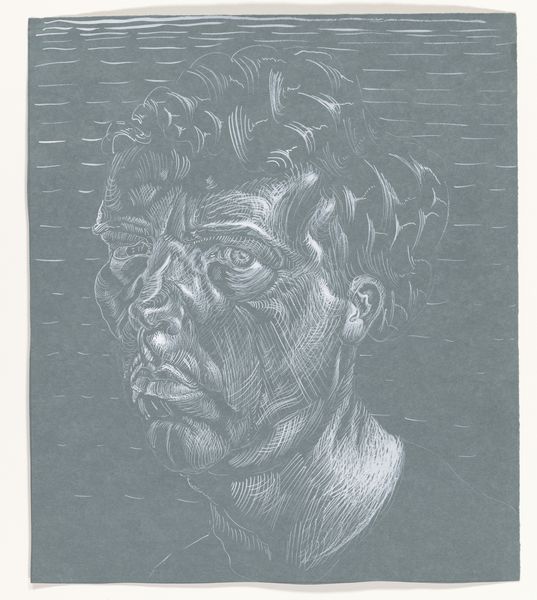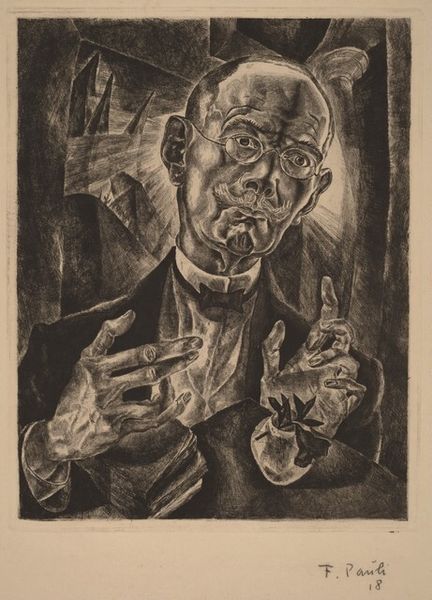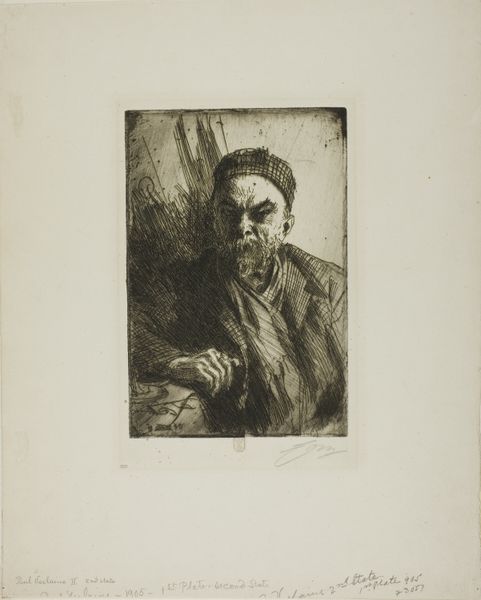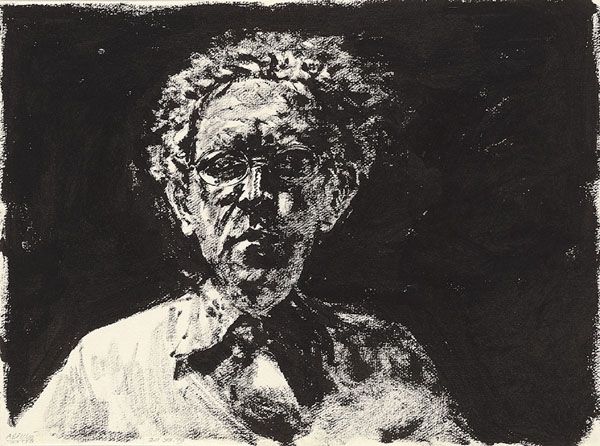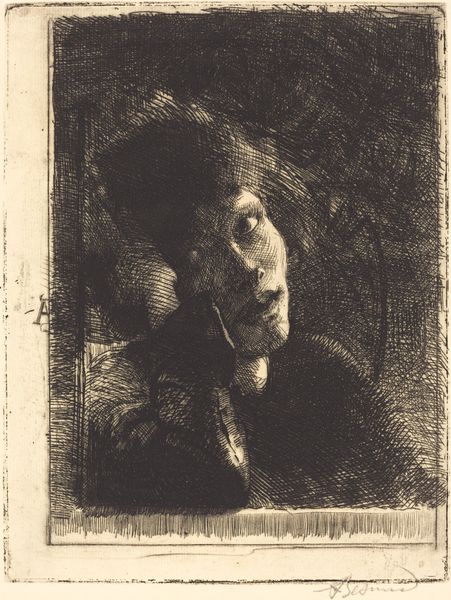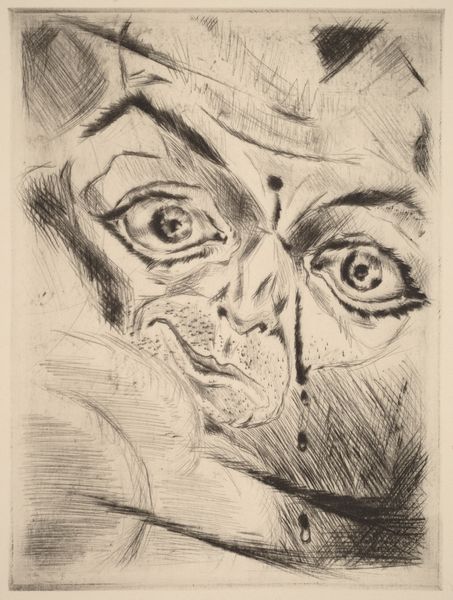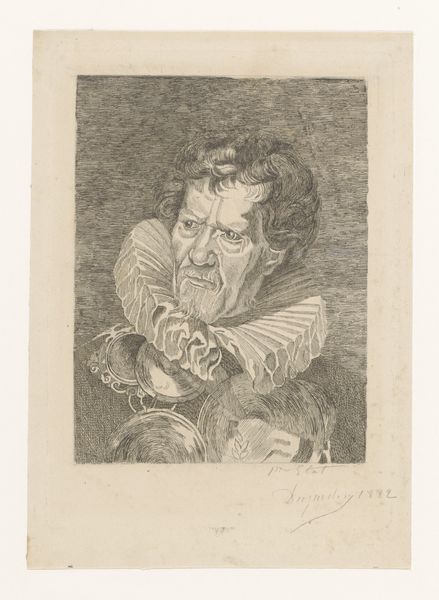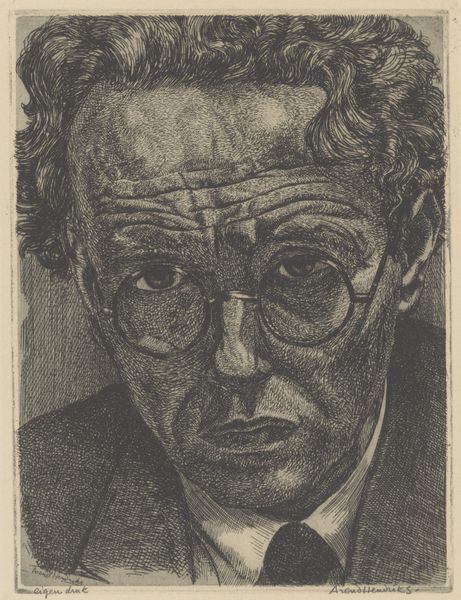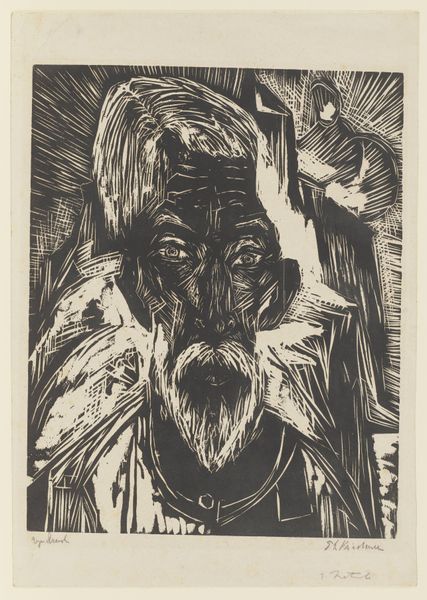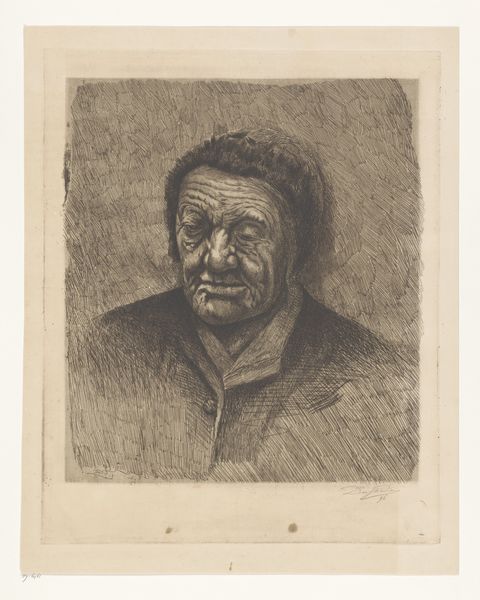
drawing, print, intaglio, engraving
#
portrait
#
pencil drawn
#
drawing
#
self-portrait
# print
#
intaglio
#
pencil sketch
#
pencil drawing
#
pen-ink sketch
#
portrait drawing
#
engraving
#
realism
Dimensions: height 238 mm, width 167 mm
Copyright: Rijks Museum: Open Domain
Curator: This image arrests me. The detail, rendered entirely in grayscale, is quite affecting, no? Editor: Indeed. Looking at "Self-Portrait," a print made through engraving and intaglio by Arend Hendriks between 1911 and 1943, currently held at the Rijksmuseum, what stands out is the artist’s intensely scrutinized gaze. The commitment to realism here demands attention. Curator: His face is heavily lined, bearing witness to lived experience; time inscribed on the skin like an ancient manuscript. Those eyeglasses create a strange effect too, one lens catching light while the other almost disappears. And the landscape visible beyond his shoulder almost appears like it is also graved into his very being! The overall composition creates a profound symbol. Editor: It's fascinating how the socio-political climate of the early to mid-20th century might have impacted this portrayal. A period marked by significant global upheaval, Hendriks was producing self-portraits seemingly interrogating himself during these very times. The act of etching, a painstaking, almost laborious process, echoes a period of strife. The visual realism reflects the unvarnished truth and experience of life as such during a particularly troubled epoch. Curator: Consider the symbolism of reflection intrinsic to a self-portrait, especially in the hand holding the drawing utensil. He has the ability to replicate himself but through the symbol of capturing oneself we have also an admittance of our inescapable temporality and of being an artifact or historical moment! Editor: Absolutely, but it is in galleries like the Rijksmuseum that such symbolism attains new dimensions, engaging contemporary society about artistic innovation but with a certain reverence. Hendriks' portrait becomes a conduit— a tangible expression of the world at his specific moment. This endures, resonating through diverse perspectives across subsequent decades. Curator: Yes, it is almost as if the artist predicted that. As viewers encounter the etching today, we participate in an extended dialogue that transcends time. This isn't merely a face, but a mirror reflecting the complex interplay of art, self, and society throughout an era. Editor: Agreed. These types of art experiences—encountering the personal and intimate while contemplating it on grand scales of shared humanity—really highlights art’s potential for social impact across vast audiences.
Comments
No comments
Be the first to comment and join the conversation on the ultimate creative platform.

